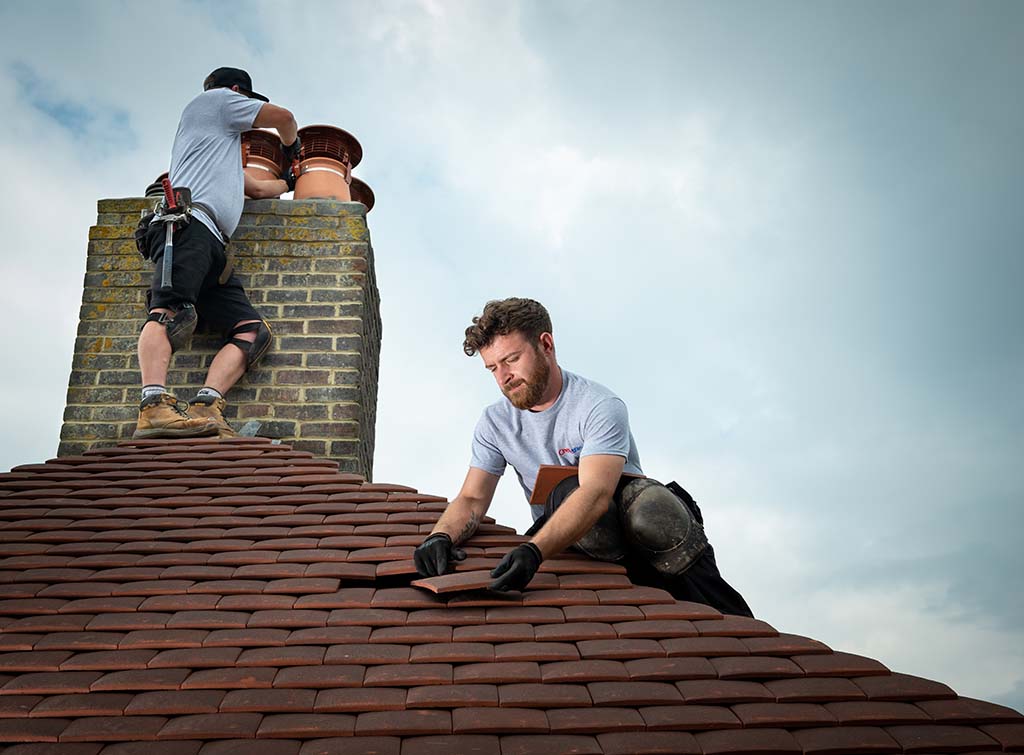Roofs in the UK are subjected year round to a variety of weather conditions. From heavy rainfall and snow in the winter to strong winds and fluctuating temperatures, the constant exposure can cause wear and tear on roofing materials. These environmental factors over time can cause roof damage. In some cases, a replacement may be the only solution. It is an expensive undertaking to replace a roof, but is necessary for the home's structural integrity and to prevent future repairs. Knowing when to replace your roof, whether it's leaking or old, is essential to protecting your home.

Roofs are essential for protecting your home against the weather. This is why homeowners should prioritize their roof maintenance. One of the primary reasons for roof replacement in the UK is the natural aging process of roofing materials. Although traditional roofing materials like tiles and slates are durable, they can wear out over time due to prolonged weather exposure. Tiles can crack over time. Slates could become loose. The roof structure may also deteriorate. Roofs have an average lifespan between 20 and 50 years depending on their material. After this time, replacement is necessary to avoid leaks or further structural damage. When the roof's materials are no longer performing effectively, it is time to consider a replacement.
The choice of materials for a new roof is crucial. Slate, clay tiles and concrete tiles are the most popular roofing materials in the UK. Synthetic alternatives, which mimic the traditional look while providing modern advantages, have also become more common. Slate is highly durable and can last well over 100 years, making it a popular choice for heritage homes. Clay tiles are also long-lasting and have natural insulation qualities, though they can be damaged by freezing temperatures. Concrete tiles are cost-effective and widely used in suburban housing. For easier installation, some homeowners choose lightweight composite or metal tiles. Selecting materials according to the architectural style of the house, the local building codes, and regional climate is essential. A professional roofer can help guide these decisions based on the specific requirements of each property.
The process of Typical roof replacement prices in the UK can be complex and time-consuming, often requiring the expertise of a professional roofing contractor. The first step involves a thorough inspection of the roof to assess the extent of the damage and determine whether a full replacement is necessary. After determining the extent of the damage, it is necessary to remove the existing roofing and prepare the roof structure for the replacement. This may involve repairing or replacing the underlying decking, which is the layer beneath the roofing material that supports it. The roof is then covered with a new material. Options include traditional slates and tiles, as well as more modern options like synthetic or metal tiles. The entire process can take several days, depending on how large the house is and how complex the roof structure is. To find added details please have a peek here

Choosing the right roofing material for your home is an important decision when planning a roof replacement. The material you select will affect not only the appearance of your home but also its energy efficiency and long-term durability. Slate and tiles are popular choices in the UK, known for their longevity and aesthetic appeal. They are especially suitable for period and traditional homes. For modern homes, asphalt shingles or concrete tiles are often preferred due to their affordability and ease of installation. Flat roofs, commonly found in extensions or commercial buildings, may require bitumen or rubber membrane materials. The pros and cons of each material are different, so the best choice is based on your budget, the desired life expectancy, as well as the architectural style and design of the house. A professional roofer will help you to make the right decision for your unique home.
Roof replacement in the UK is a major but necessary investment that can greatly enhance the value, safety, and energy efficiency of your home. By recognising the signs of roof failure early, choosing the right materials, and hiring reputable professionals, homeowners can ensure a smooth and successful project. Although the cost may seem daunting, the long-term benefits-such as reduced maintenance, improved insulation, and increased property value-make it a worthwhile decision. Taking the time to research, plan, and invest wisely will pay off in the long run. Maintaining a reliable and secure roof, whether you live in an urban townhouse or rural cottage is important for a comfortable lifestyle. With the right approach, a roof replacement can be a seamless process that adds both beauty and functionality to your home.
Comments on “Roof Replacement in the UK: Ensuring the Longevity and Security of Your Residence”